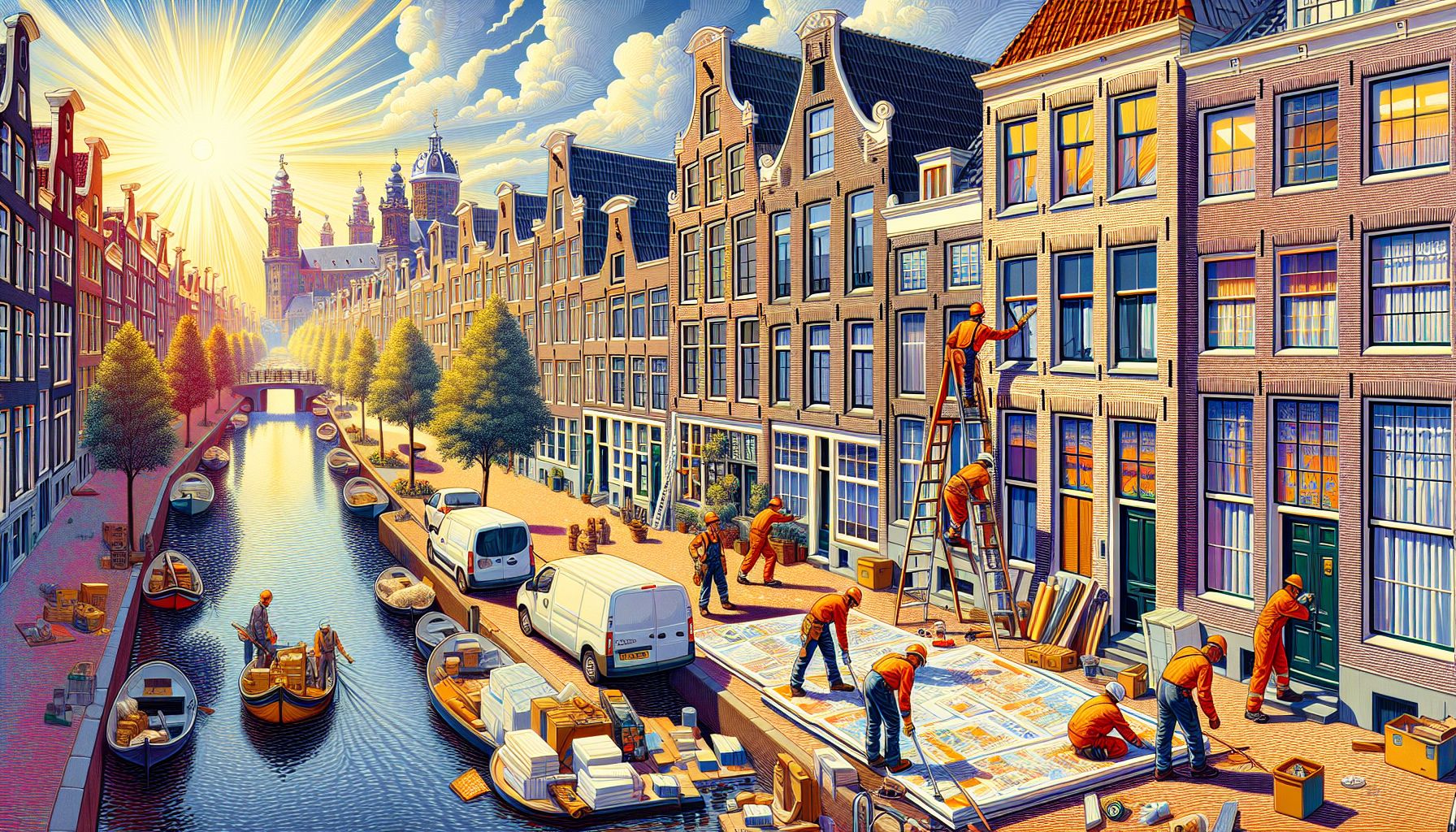Amsterdam's Ambitious Insulation Initiative: Tackling Climate Change One Home at a Time

Amsterdam, Wednesday, 7 August 2024.
Amsterdam launches a groundbreaking insulation campaign supported by the NIP LAI subsidy, aiming to improve energy efficiency in buildings and reduce carbon emissions. The city targets 123,000 homes for insulation by 2030, with a focus on homeowners’ associations and vulnerable residents. This initiative is part of Amsterdam’s broader climate goal to achieve a 60% CO2 reduction by 2030 compared to 1990 levels, emphasizing ‘unequal investing for equal opportunities’ to ensure climate justice in the energy transition.
Aiming for a Sustainable Future
The city of Amsterdam’s latest initiative showcases its commitment to combating climate change and promoting sustainability. By leveraging funds from the National Insulation Program (NIP) Local Approach Insulation (LAI), the municipality aims to insulate approximately 123,000 homes by 2030. This effort is driven by the city’s ambitious goal to reduce CO2 emissions by 60% compared to 1990 levels. The program prioritizes homeowners’ associations (VvEs) and aims to support vulnerable residents, aligning with the city’s broader vision of ‘unequal investing for equal opportunities.’
Targeting Energy Inefficiency
Research conducted by CE Delft identified 169 neighborhoods in Amsterdam with about 92,500 homes that have high heating demand, marking them as priority areas for insulation. The municipality has outlined a detailed support system for VvEs, which includes providing information, advice, planning, and execution assistance. This approach aims to tackle both energy inefficiency and backlog maintenance, improving overall housing quality in these neighborhoods.
Focus on Vulnerable Groups
The initiative places a strong emphasis on addressing energy poverty, with specific provisions for residents in energy poverty, VvEs, owner-occupiers outside VvEs, housing corporations, and private landlords. Laura den Ouden and Wouter Rijsman, policy advisors in the Housing Quality and Sustainability team, have highlighted the importance of this inclusive approach to ensure that the benefits of the energy transition are equitably distributed.
Financial Support and Long-term Goals
Amsterdam has allocated substantial financial resources to support this insulation campaign, reserving €20.5 million for supportive projects and €59 million for insulation subsidies. The municipality aims to insulate half of the homes in VvEs in selected neighborhoods by 2026, which translates to approximately 500 VvEs and 28,000 homes. Homeowners of poorly insulated homes valued under €370,000 can receive up to €2,500 per apartment for insulation and ventilation measures.
Collaborative Efforts for Broader Impact
To enhance the effectiveness of the initiative, Amsterdam is working to improve financing options for VvEs and has signed a cooperation agreement with other municipalities and the national government. This collaborative effort aims to create a more comprehensive and supportive framework for energy efficiency improvements, fostering a sustainable and resilient urban environment.
Conclusion: A Model for Climate Action
Amsterdam’s insulation offensive exemplifies a proactive and inclusive approach to tackling climate change. By focusing on energy efficiency and supporting vulnerable populations, the city is setting a robust example of how local governments can drive significant environmental and social benefits. As the world grapples with the challenges of climate change, initiatives like these underscore the critical role of urban policies in creating a sustainable future.

